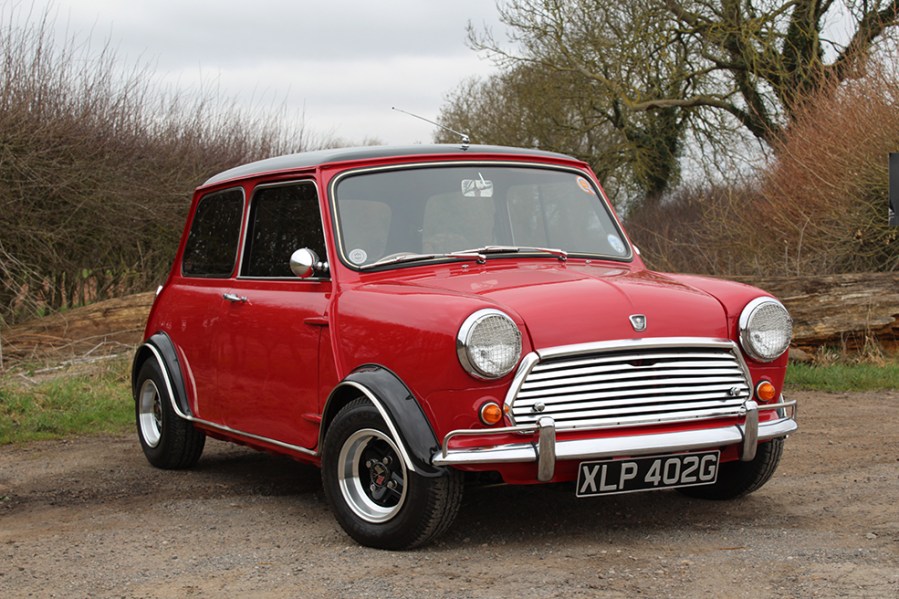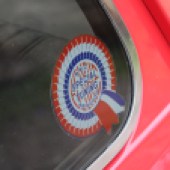It may not have an ‘S’ on its nose but the Mini Cooper Mk2 is still great fun to drive. We drive a tastefully restored and modified 1968 example
Words: Jack Grover
Underlying just how suitable for a sporting life the Mini inherently was, the first Cooper of 1961 needed only a slightly larger twin-carb engine, a close-ratio gearbox with a remote change and front disc brakes – and those much-vaunted brakes were scarcely an improvement on the standard drums. Before long the Mini Cooper began winning silverware by the truck load, on track and rally stage and in the hands of ‘Works’ outfits, privateers and amateurs. Different engines were tried, with more powerful and race-orientated Cooper S models arriving in 1963.
By the time the Mk2 Mini arrived in 1967 the Cooper’s fame was at its height after three Monte Carlo Rally wins (which would have been four consecutive ones if not for the controversial disqualification of the 1966 cars on a regulatory technicality about the light bulbs fitted to the headlamps) and the range had settled down to consist of 998cc standard and 1275cc ‘S’ Cooper models. In fact the Cooper’s days at the top of international motorsport were already over – the Mini had reached the limit of their development and the rally crowns were passing to the much more powerful versions of the Ford Escort. But that didn’t dent the Cooper’s iconic status and even when British Leyland stopped making official Cooper Ss in 1971 there was an entire industry dedicated to letting people modify their Minis to the same sort of level. Of course the Cooper would return for the 1990s and is still with us today.
It can sometimes seem that any Mini Cooper without an ‘S’ badge on the bonnet is not worth any attention. But the standard 998cc version was always the bigger seller and while it didn’t win at Monte Carlo, the Cooper could be just as much fun as its more illustrious stablemate in the right hands.
In any case, calling this 1968 car a ‘standard’ Cooper does it a disservice given how much effort has been lavished on it. It was fully rebuilt in 2009, with the body being taken back to bare metal. All the bills are still in the history file, recording a phenomenal total of £12,000 spent at a string of big-name Mini specialists.
Work here included new inner and outer sills, all four floor sections, the central cross member and wings. New subframes were fitted front and rear, and the original Hydrolastic suspension was ditched in favour of ‘dry’ rubber cones with the adjustable Hi-Lo trumpets. The new paint is in the classic Tartan Red, matched with the correct and very sharp-looking black roof. New chrome bumpers, overriders and Mk1-style corner bars were fitted as well as the twin fuel tanks more usually associated with the ‘S’. A completely stock Mini is almost unheard of, and here are chunky 6×10-inch Revolution alloy wheels under extended period-style arches (nicely complementing the black roof) which are both non-standard but in keeping with both the period and the character of the car. Although it is 14 years since the Mini’s restoration it is still in absolutely top-rank condition in all respects – as if the work had been completed last week.

The Cooper’s cabin was just as thoroughly treated as the bodywork, with new seats, trim, carpets and door and window seals. The black door cards and seats are all still in excellent condition, although the seats would now be classed as ‘excellent’ in appearance rather than ‘brand new’. Minor mods here include a wood-rimmed Mota-Lita wheel, a period radio and a parcel shelf-mounted rev counter – again, typical period changes that don’t affect the look or feel of the car. Less usual is the tinted glass in the side windows and rear screen, taken from a Radford Mini – not unknown in the late 1960s or early 1970s but definitely rare. They go well with the black trim on the exterior and would probably help keep the temperatures down in summer.
The 998cc engine has been rebuilt by RetroMarques at a cost of £3000 (on top of the cost of the body restoration). It is to stock Cooper spec but benefits from an unleaded head, pancake air filters and a Maniflow sports exhaust. It’s all very 1960s under the bonnet, with the engine in the classic green colour and everything else looking smart and shiny without being overdone. This is a rare Mini without any signs of oil leaks, while all the wiring and cables look tidy. The restoration included a replacement clutch, a complete renewal of the braking system and a new steering rack. It is also running a lower final drive, promising brisk acceleration at the expense of noise and top speed.
All of which adds up to a car that is an absolute hoot to drive. One of the oft-quoted advantages of the 998cc Cooper was that the engine is smoother and more free-revving in road use. Here the quality of the engine rebuild and the motor’s tuning are clear in just how smooth and eager the engine is. The low and close gearing certainly helps as well but in the country lanes of Nottinghamshire this Mini really picks up speed nicely, and without excessive drivetrain shunt or gear whine (there’s some of both – it’s a Mini after all).
The gearbox shifts smoothly, although rev-matching is needed to get clean down changes, but the responsiveness of the engine makes that a joy. With wide wheels and ‘dry’ cones, the ride is typically firm but the Mini tends to tremble over bumps rather than thump over them. And of course the steering is quick, the car changes direction like a housefly and the cornering abilities scarcely credible. Even when just pottering around the Mini feels pert and alive, while the well-trimmed interior and fresh seats make it reasonably comfortable.

Austin Mini Cooper Mk2: our verdict
All Minis prove that good things come in small packages, and I really do think that the smaller the Mini the better it is. This one certainly proves that it can be a case of quality over quantity – I’ve known 1275cc Cooper Ss that don’t go and drive as nicely as this, or at least certainly don’t feel like they do.
Comparisons aside, this is Mini that’s had a top-notch restoration and high-standard mechanical work that leaves it looking and feeling as fresh as it was when new, with some subtle but effective cosmetic modifications to make it stand out – if the condition of the paintwork and chrome wasn’t enough to do that alone. Sadly, this particular car is now sold, but the dealer often has Minis in stock – including an ex-Works 1275 GT – so keep an eye on its website.












